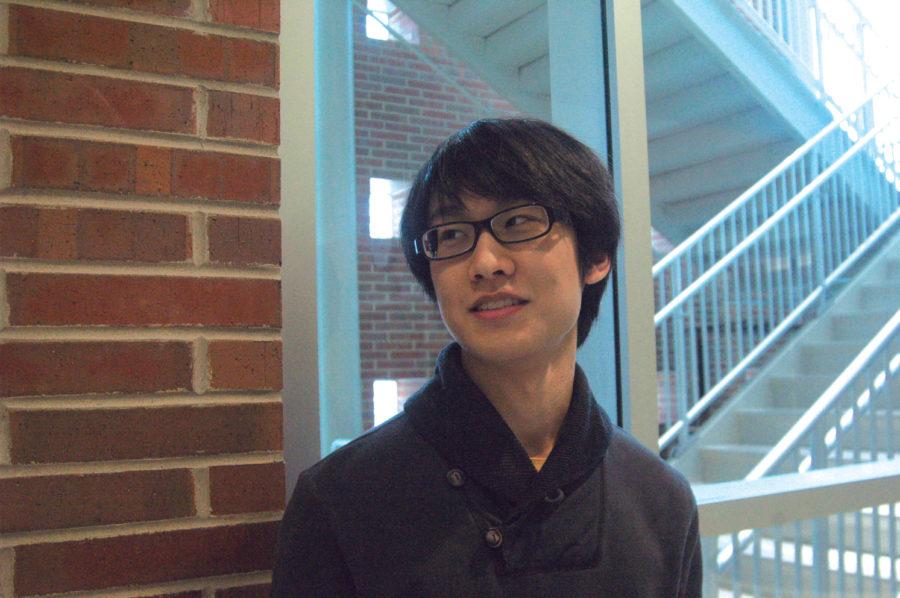 Try as you might, you’ll eventually reach a limit if you work by yourself. But as a member of a group, you’ll be able to achieve beyond the capabilities of everyone combined. Using the idea that the whole is more than the sum of its parts, crowdsourcing has the prospect to become the future of business, science and the solution for challenges yet to come.
Try as you might, you’ll eventually reach a limit if you work by yourself. But as a member of a group, you’ll be able to achieve beyond the capabilities of everyone combined. Using the idea that the whole is more than the sum of its parts, crowdsourcing has the prospect to become the future of business, science and the solution for challenges yet to come.
A few weeks ago, a NPR story caught my attention. Two research organizations, both aimed at studying the collection of the microbiome—microbes living in and on your body—turned to a non-traditional method of funding: the public. I’ve been aware of the existence of “crowdsourcing,” but the fact that a crowdsourced project could fund a formal scientific study impressed me enough to do some reading.
Mashable, an online publication on digital innovation, defines crowdsourcing to be “distributed problem solving.” Crowdsourcing centers on opening up contributions to a problem or project to the public, amassing a large group of people who collectively pool intelligence, creativity and resources while working together in parallel. While this is a general definition, crowdsourcing exists in many specific cases—which you have probably encountered without knowing it. Reading product reviews from an online store like Amazon is one example of crowdsourcing. If you’ve ever consulted with your friends before buying something, you’ve experienced crowdsourcing. Websites like Kickstarter offer the use of crowdfunding, which is the crowdsourcing of donations.
Back to the research crowdsourcing: both groups in the NPR story managed to raise over $300,000 for their projects. The researchers behind these projects attribute their success to the curiosity and engagement of the public in the project, who paid for a kit that allowed each person to take a sample of his or her own microbiome to have it analyzed and added to an information pool. After information processing, the researchers will make comparative results available to the public, who can then identify where they stand among the sample population.
While it seems like only popular projects will be funded through this method, this is far from the truth. A microbiologist studying E. coli in mouse guts managed to acquire funding simply by virtue of her presentation. Crowdsourcing research is largely independent of the topic; rather, its success depends on how the party communicates its needs. The scientist is rewarded for how he or she conveys information, instead of the actual content.
Scientific research is only one of the newest members of the crowdsourcing community. Following the Fukushima Daiichi nuclear meltdown in Japan, crowdsource sites popped up to collect and map radiation levels using public-supplied information. Several journalist organizations ask consumers for experiences and reporting help, such as CNN’s iReport. In computer science, a variety of open-source software platforms draw development from crowdsourcing. Crowdfunding platforms have even become financial aid saviors for pursuers of unreachable summer program or college degrees. Crowdsourcing’s flexibility allows for infinite applications.
In today’s interconnected society, the ability to harness the power of the crowd becomes a powerful tool in the hands of any activist, researcher or innovator. Already, many businesses, engineers and media have successfully used crowdsourcing as a solution to contemporary challenges, with scientists to soon join the bandwagon. A crowdsourced future may not be very far away—viable, at the least.
Tony Tan is a managing editor for the HiLite. The views in this column do not necessarily reflect the views of the HiLite staff. Reach him at [email protected].




























![Keep the New Gloves: Fighter Safety Is Non-Negotiable [opinion]](https://hilite.org/wp-content/uploads/2024/12/ufcglovescolumncover-1200x471.png)
















































![Review: “We Live in Time” leaves you wanting more [MUSE]](https://hilite.org/wp-content/uploads/2024/12/IMG_6358.jpg)
![Review: The premise of "Culinary Class Wars" is refreshingly unique and deserving of more attention [MUSE]](https://hilite.org/wp-content/uploads/2024/12/MUSE-class-wars-cover-2.png)
![Introducing: "The Muses Who Stole Christmas," a collection of reviews for you to follow through winter [MUSE]](https://hilite.org/wp-content/uploads/2024/12/winter-muse-4.gif)
![Review: "Meet Me Next Christmas" is a cheesy and predictable watch, but it was worth every minute [MUSE]](https://hilite.org/wp-content/uploads/2024/11/AAAAQVfRG2gwEuLhXTGm3856HuX2MTNs31Ok7fGgIVCoZbyeugVs1F4DZs-DgP0XadTDrnXHlbQo4DerjRXand9H1JKPM06cENmLl2RsINud2DMqIHzpXFS2n4zOkL3dr5m5i0nIVb3Cu3ataT_W2zGeDAJNd_E-1200x884.jpg)
![Review: "Gilmore Girls", the perfect fall show [MUSE]](https://hilite.org/wp-content/uploads/2024/11/gilmore-girls.png)
![Review in Print: Maripaz Villar brings a delightfully unique style to the world of WEBTOON [MUSE]](https://hilite.org/wp-content/uploads/2023/12/maripazcover-1200x960.jpg)
![Review: “The Sword of Kaigen” is a masterpiece [MUSE]](https://hilite.org/wp-content/uploads/2023/11/Screenshot-2023-11-26-201051.png)
![Review: Gateron Oil Kings, great linear switches, okay price [MUSE]](https://hilite.org/wp-content/uploads/2023/11/Screenshot-2023-11-26-200553.png)
![Review: “A Haunting in Venice” is a significant improvement from other Agatha Christie adaptations [MUSE]](https://hilite.org/wp-content/uploads/2023/11/e7ee2938a6d422669771bce6d8088521.jpg)
![Review: A Thanksgiving story from elementary school, still just as interesting [MUSE]](https://hilite.org/wp-content/uploads/2023/11/Screenshot-2023-11-26-195514-987x1200.png)
![Review: "When I Fly Towards You", cute, uplifting youth drama [MUSE]](https://hilite.org/wp-content/uploads/2023/09/When-I-Fly-Towards-You-Chinese-drama.png)
![Postcards from Muse: Hawaii Travel Diary [MUSE]](https://hilite.org/wp-content/uploads/2023/09/My-project-1-1200x1200.jpg)
![Review: "Ladybug & Cat Noir: The Movie," departure from original show [MUSE]](https://hilite.org/wp-content/uploads/2023/09/Ladybug__Cat_Noir_-_The_Movie_poster.jpg)
![Review in Print: "Hidden Love" is the cute, uplifting drama everyone needs [MUSE]](https://hilite.org/wp-content/uploads/2023/09/hiddenlovecover-e1693597208225-1030x1200.png)
![Review in Print: "Heartstopper" is the heartwarming queer romance we all need [MUSE]](https://hilite.org/wp-content/uploads/2023/08/museheartstoppercover-1200x654.png)




